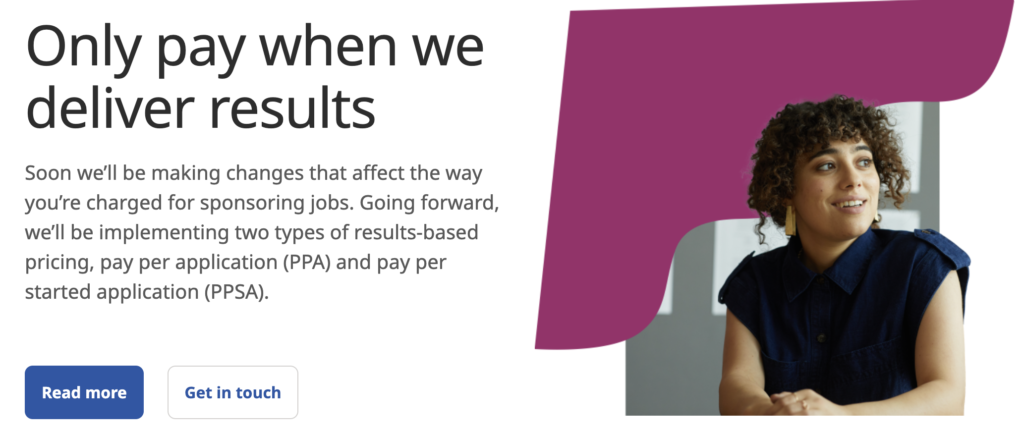The first job board was launched in the early 1990’s with the advent of the internet and its wide-spread adoption. The idea was to provide a place where employers would list their vacancies and then prospects would apply and try to fill them. Early in my career I remember using every job board in existence to try to find work. I would write countless cover letters, go through unlimited resume revisions, and at the end of it all, I’d never hear from anyone. That’s because job boards never allowed for employer and candidate interaction. They were just technology middlemen with no connection, no quality, no communication, and poor results. A new Indeed survey shows that more than nine in ten (96%) employers say they want an online job site that can help match them to quality candidates, and another 96% say they want a job site that directly connects them to quality candidates.
The way I see it, the current model has a few large problems:
They aren’t human
My experience detailed above is something millions of people have gone through and continue to go through today and it’s terrible. We have taken the human aspect of applying for a job and removed it from the entire process. We need direct interaction between employers and prospects. Without it, the process is slow, impersonal, and quite honestly dejecting for the candidate.
They don’t match
I was recently looking for a new assistant and thought I’d try a few job boards. I was specific in my description and had high expectations. A few hours went by and I started to get emails about candidates applying for the role, naturally I was excited! However, when I looked at the candidates my excitement was quickly turned to frustration and eventual resentment. None of the candidates had any relevant experience. I had chefs, personal trainers, movie interns, musicians, and even baristas applying for a role which they had no business applying for. It’s not because there aren’t some transferable skills, there are – but because I was very clear in the requirements and the specifications in what I was looking for and the people who applied didn’t have them. This is the problem with all job boards, there is no matching of candidates to the role required. It’s a giant Lord of the Flies type free-for-all where anything goes which is bad for everyone involved.
The pricing models are outdated
I’m pretty sure that the standard model of pay-per-click or pay for job posting has been around since the early 1990’s when job boards were first created. Over 30 years with no innovation?! This pricing model doesn’t offer any guarantee or even any hope of getting either quantity or quality when it comes to candidates. In fact, the only one who benefits from this approach is the job board because they get to make money without being accountable for any of the outcome.
The platforms are…old (to put it nicely)
Technology has come a long way since the 90’s but most online job boards today look like a time-capsule. I’m surprised that they don’t auto-play Nirvana songs when you visit them (if you are too young to remember Nirvana…I’m sorry). The point is that functionality is limited, the sites are static, and the user experience is terrible.
It’s no secret that hiring and retaining talent is a top priority for businesses around the world and this is only going to become more challenging as we deal with shrinking talent pools, an aging population, and changes in workplace preferences. The demand for better recruitment technology has never been greater nor has it ever been more possible. Thankfully there’s a company out there which is innovating and doing something new.
I’ve spent the past few weeks learning what the team at Indeed is doing to make this old-school experience better for both the candidate and the employer experience and was pleasantly surprised when I heard that they were introducing a pay-for-results pricing option. This means that regardless of the budget you have, you will be able to get qualified candidates by using pay per application or pay per started application options. For example, with pay per application which is hugely beneficial for small businesses in particular, , you’re able to review the price you want to spend, you can set an application limit, automatically reject unqualified candidates by setting predetermined requirements, and you have 72 hours to manually reject applications before you get charged. This is incredibly helpful because it means if you don’t think an application is quality enough, you can reject it and not be charged.
Employers who empower job seekers are best positioned in today’s market. Indeed provides the tools and technology needed to support employers and get quality candidates hired, faster. The ongoing transformation from job search site to hiring platform means that Indeed’s technology is there to support the humans at the helm of hiring. It helps make their jobs easier and more efficient.
I’d love to hear your experience and thoughts on job boards? Have you used them?
. . .
If you are ready to save time and start hiring the RIGHT person faster, then I invite you to learn more and check out Indeed’s Pay for Results pricing. Why spend money on something that isn’t giving you the result you want?

Comments